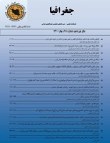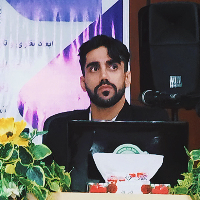Analysis of the role of the United States in the political geography theories of the three classical, modern, and postmodern periods
Much of the process of developing political geography has been influenced by theories proposed by global thinkers over the past two centuries. The classical theories of political geography have been proposed mainly with the focus on the state and its constituent components. However, modern and postmodern theories of political geography, although they still pay special attention to the state and the national/country scale, but they do not reflect this centrality as a unit. Therefore, with the help of the geographical scale problem, it expands the scope of political geography from the micro level to the global level with wider issues.
Our main purpose in this applied and theoretical research is to study the role of the United States in the theories of political geography of the three classical, modern and postmodern periods, from the dawn of the twentieth century to It is now. An examination of 14 theories by political geography theorists shows that each thinker seeks to represent in some way the role of the United States and its rise and fall in the world order to the rulers of their own country or to the world. These fourteen theories are: Turner's frontier hypothesis, the influence of central authority on the landscape (Whittlesey), the political cycle of state (Valkenburg), the geographical understanding of political survival (Hartshorne), the geographical model of political systems analysis (Cohen and Resonant), Theories of the world system, the center-periphery model and the theory of the decline of American power (Wallerstein), the triple theory of modernity (Peter Taylor), the theory of the political geography of the world order (John René Short), the theory of distance and foreign policy (Henrikson), the theory of modern nation-building (Fukuyama) and the theory of social movement in political geography (Michael Brown).
The United States has played a prominent role in the thought process of prominent American and non-American theorists, and in this article, we have examined the role of the United States in the theories of political geography from the beginning of the 20th century until now. The results of the research show that in the theories of the three periods of classical, modern and post-modern geopolitics, the United States has played the largest role among all countries in the world, and in fact theorizing in political geography is not possible without considering the role of the United States.
The classical theories of political geography that have been proposed with the focus of the state, including hypothesis of the frontier, the impact of the central authority on the perspective and political cycle of nation, have focused on the "state" and the national scale, as the main actor of the international system. In these theories, the United States has been attractive to these theorists as a country that has represented hegemony in the future world order. In addition, the nationality of the classic political geography theorists discussed in the article (Turner, Whittlesey, and Valkenburg), who are all Americans, has played a key role in focusing these theories on the United States and its representation.After that, the modern theories of political geography, which is a product of the Cold War era, also started with theories focusing on the national scale, and Hartshorne illustrated the geographical position of the United States in the world order. This level of scale in theorizing continued with the theory of Cohen and Rosental, and they placed the United States as one of the main countries at the end of the open spectrum of the world's national political systems. But the focus on state-centric in modern theorizing gradually faded, and the theories of American Taylor and Wallerstein, presented at the end of the Cold War, found a wider scale and ranged from the local to the global level. Of course, this did not prevent these theorists from emphasizing the national interests of their country, and they always depicted the hegemonic role of the United States in the world order in their theories. In postmodern theories; This progress in the scalability of theories continued with the theory of triple of modernity, and the United States was introduced as the representative of the third round of modernity and depicted as the third hegemon. These levels of postmodern analysis continued in political geography with the work of John René Short, Henrikson, and Fukuyama. However, the key role of the United States was maintained with regard to the American nationality or the countries aligned with those theorists on the one hand and maintaining the global power of this country on the other hand.
- حق عضویت دریافتی صرف حمایت از نشریات عضو و نگهداری، تکمیل و توسعه مگیران میشود.
- پرداخت حق اشتراک و دانلود مقالات اجازه بازنشر آن در سایر رسانههای چاپی و دیجیتال را به کاربر نمیدهد.



